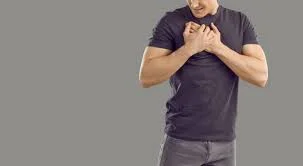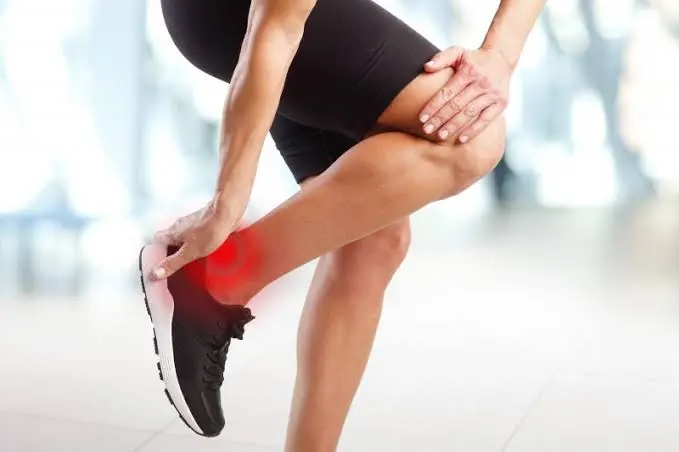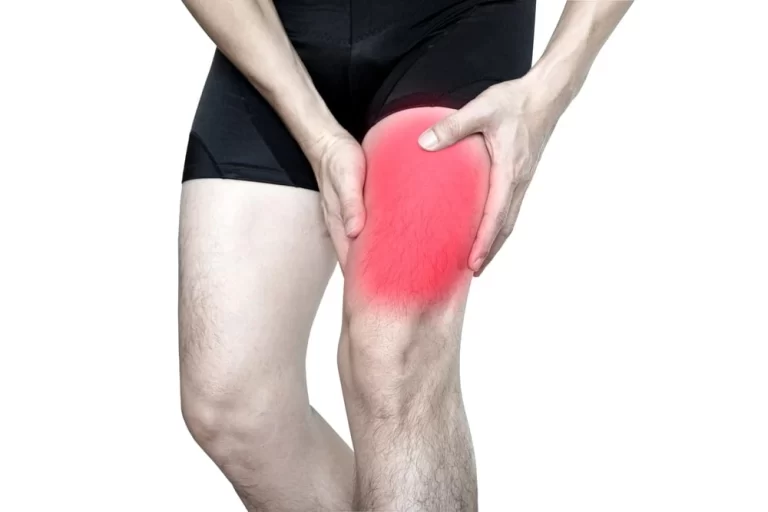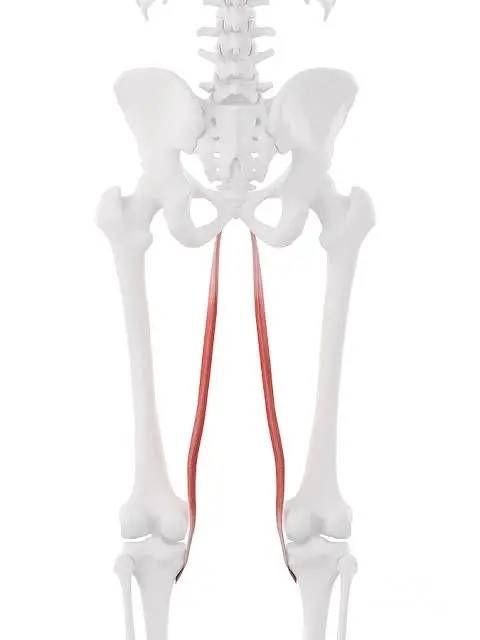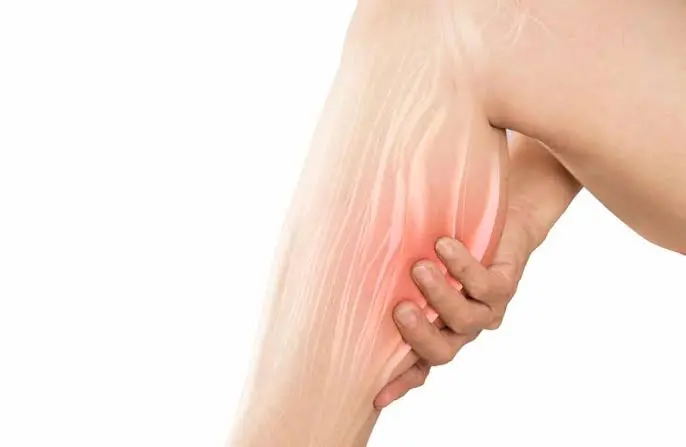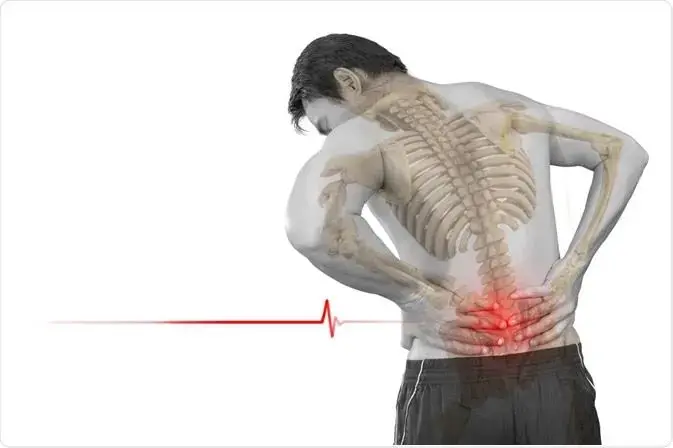Chest Muscle Pain
Table of Contents
Introduction
Chest muscle pain is concerning because any type of chest pain can indicate heart disease. And, because chest pain can be a symptom of angina or another cardiac (heart) problem, it’s always a good idea to get it checked out.
However, heart disease is only one of many conditions that can cause chest pain. A strained chest muscle is one of the most common causes of non-cardiac chest pain.
The following article will look at some of the causes of musculoskeletal chest pain as well as how strained chest muscles are diagnosed and treated.
Muscles in the chest
The pectoralis major and minor muscles, as well as the intercostal muscles, make up the majority of your chest.
The pectoralis major muscles run from your armpits to the centre of your breastbone, or sternum.
The pectoralis minor muscles run along your ribs, just under your collarbone, and are smaller than the pectoralis major.
The chest wall is formed by the intercostal muscles, which run between the ribs.
While the pectoralis major and minor muscles can be strained, nearly half of all chest muscle strains occur in the intercostal muscles.
Causes of Chest Muscle Pain
The most common cause of muscular chest pain, also known as a pulled muscle, is an intercostal muscle strain.
The intercostal muscles are a group of muscles that form the chest wall and sit between the ribs.
The external, internal, and innermost intercostal muscles make up this muscle group. They work together to stabilize the rib cage and aid in breathing.
Chest wall strains can be caused by a variety of factors, including:
- Sports injuries caused by overstretching, muscle fatigue, or repetitive and forceful motions
- Contact ailment
- insufficient pre-exercise warm-up heavy lifting poor flexibility
- torso twisting beyond its normal range
- reaching for the sky for extended periods
- musculoskeletal overuse
- chronic poor posture resulting in a severe cough
Muscle pain
Chest pain is frequently accompanied by muscle pain caused by tension, an injury, or a chronic pain syndrome.
Muscle pain symptoms vary greatly. The discomfort could be:
- sharp or dull shooting or throbbing that radiates outward or is concentrated in one location
Chest pain is more likely to be muscular if:
- improves with massage
- worsens when a person inhales sharply and suddenly feels similar to previous muscle pain reproduced by pushing on the area
Panic attack
Chest pain can be a terrifying symptom of a panic attack, making a person feel even more anxious. The pain can be comparable to that of a heart attack.
Other symptoms that a person may have during a panic attack include:
- trembling
- breathing problems
- dizziness
- sweating and chills
- numbness or tingling in the hands
- nausea
- stomach ache
- Slow, deep breathing can help to alleviate these attacks. They may last only a few minutes in some cases, but they may last up to 30 minutes or more in others.
If the pain does not go away, it can be difficult to tell the difference between a panic attack and a heart attack without the assistance of a doctor.
Lung problems
Chest pain can be caused by lung problems.
Chest pain caused by lung problems may include:
- Feeling sharper when breathing in and out occurs in conjunction with symptoms such as breathing difficulties and coughing.
- Extensive, lung-related chest pain is a medical emergency. If a person is experiencing chest pain related to the lungs, it is best to seek immediate medical attention.
Infection of the respiratory tract
Chest pain can be caused by respiratory infections.
when a respiratory infection, some people develop a condition known as pleurisy. Pleurisy is an inflammation of the pleura, the tissue that surrounds the outside of the lungs.
If chest or lung pain persists after a respiratory infection, consult a doctor.
Mastitis
Mastitis is an infection of the breast tissue. Mastitis can be excruciatingly painful. A person may encounter:
Swelling, shooting, or sharp pains in the breasts, as well as a fever
Mastitis is common during breastfeeding due to milk accumulation. The infection may resolve on its own, but some people may require antibiotics.
Breastfeeding
Other than mastitis, there are several other potential causes of chest pain while breastfeeding or nursing. It can cause chest pain and pain around the breasts.
This can occur as a result of:
- increase in breast size
- excessive breast milk clogged milk ducts
- Thrush in the breast abscess
- A person’s doctor can assist in determining the source of the pain and recommending any necessary treatments.
Embolization of the lungs
A pulmonary embolism is a blood vessel blockage that leads to the lungs. An embolism occurs when a blood clot breaks free, most commonly from the legs. A person who has a blood clot in their leg may experience pain in that area.
Pulmonary embolisms can cause severe pain in the chest and discomfort of breath. They are life-threatening medical situations.
Other signs and symptoms may include:
- dizziness, back pain, excessive sweating, and blue nails or lips
Symptoms of Muscles Chest Pain
Pain in the musculoskeletal chest can range from dull and achy to sharp and intense. It can be felt all over the chest or just one side.
Other signs and symptoms could be:
- Pain that occurs or worsens when performing certain movements
- Deep breathing, coughing, or sneezing causes or worsens pain
- Bruising, swelling, or tenderness
Diagnosis
People who are concerned about a pulled muscle in the chest or other chest pain should see their doctor, especially if the cause is unknown.
A doctor will inquire about the patient’s symptoms, medical history, and any activities that may have caused or contributed to the pain.
If a muscle strain is the cause, a doctor will classify the injury into one of three grades, depending on its severity:
- Grade 1 (mild damage): Less than 5% of the individual muscle fibres are damaged. Strength and mobility are only slightly hampered. Recovery time is usually between 2 and 3 weeks.
- Grade 2 (more severe damage): The injury has affected more individual muscle fibres, but the muscle has not ruptured completely. There is a significant decrease in strength and mobility. The injury could take between 2 and 3 months to fully heal.
- Grade 3 (complete muscle rupture): During a physical examination, a doctor may be able to feel a defect within the muscle. In some cases, surgery may be required to reattach the damaged muscle.
Your symptoms and a physical exam may be used to make a diagnosis. To get a more detailed look at the area, your healthcare provider may also recommend imaging tests such as a chest X-ray, magnetic resonance imaging (MRI), or CT scan.
Treatment of Chest Muscle Pain
These have a few treatment selections:
RICE
The “RICE” method is commonly used to treat a chest muscle strain to reduce pain and swelling:
- Rest: Avoid strenuous activities, particularly those that cause or exacerbate muscle strain.
- Ice: Apply an ice pack wrapped in a towel to the affected area for up to 20 minutes. Rep several times per day.
- Compression: Wrap a compression bandage around the torso for compression. To avoid further injury, consult a doctor or pharmacist about how to wrap the bandage.
- Elevation: Attempt to sit up straight. When sleeping, use extra pillows to keep your chest elevated.
A doctor may advise following the RICE procedure for 24-48 hours after an injury.
Medication
Ibuprofen and other nonsteroidal anti-inflammatory drugs (NSAIDs) can help relieve pain and inflammation.
A doctor may prescribe stronger analgesics, muscle relaxants, or both to reduce painful muscle spasms in severe or persistent pain.
A persistent cough can cause a pulled muscle in the chest. Cough medicine can help stop coughing fits, putting less strain on the intercostal muscles.
Surgery
In situations where the muscles have completely ruptured, a doctor may advise surgery to repair the tear.
Physiotherapy to relieve chest muscle pain
Physiotherapy is critical in the treatment of chest wall pain, which can be caused by musculoskeletal problems, inflammation, or trauma. The primary goal of physiotherapy in the treatment of chest wall pain is to relieve discomfort, improve mobility, and address the underlying causes of the pain. A variety of treatment methods are used to achieve these objectives.
Massage Therapy
Manual therapy techniques are used by physiotherapists to address musculoskeletal issues that contribute to chest wall pain. Soft tissue mobilization, massage, and joint mobilization may be used to reduce muscle tension, improve flexibility, and improve overall chest wall mobility.
Thoracic Mobilisation
Thoracic spine techniques aim to improve mobility in the mid-back region, which can affect the chest wall. This entails using gentle, controlled movements to address thoracic spine stiffness and dysfunction, potentially alleviating chest pain.
Exercises for Stretching
Chest Wall Pain Physiotherapy includes stretching exercises that target the chest muscles and surrounding structures. These exercises are designed to increase flexibility, decrease muscle tightness, and relieve strain on the chest wall.
Postural Adjustment
Poor posture can aggravate chest wall pain. Physiotherapists evaluate and correct posture to ensure proper spine and shoulder alignment, reducing stress on the chest muscles and promoting optimal biomechanics.
Exercises in Breathing
Respiratory or breathing exercises are essential in the treatment of chest wall pain. Physiotherapists teach diaphragmatic breathing and other techniques to patients to improve lung capacity, reduce chest muscle tension, and promote relaxation.
Exercise Advice
Customized exercise programmes are created to strengthen the muscles that support the chest wall. Strengthening the core, back, and shoulder muscles can improve overall stability, lowering the likelihood of recurrence of chest wall pain.
Patient Education
Physiotherapy includes educating patients about their condition as well as self-management strategies. This may include instruction on proper body mechanics, ergonomics, and lifestyle changes to avoid exacerbation of chest wall pain.
Modalities
Physiotherapists may use modalities such as ultrasound, electrical stimulation, or laser therapy to supplement other treatment approaches and improve pain relief in some cases.
Gradual Advancement
To avoid overexertion and ensure long-term improvement of chest wall pain, physiotherapy emphasizes a gradual progression of exercises and activities.
Recovery
While you’re recovering, you should avoid strenuous exercise, such as heavy lifting. As your pain subsides, you may gradually resume your previous sports and activities. Pay attention to any discomfort or other symptoms you may be experiencing, and rest as needed.
The length of your recovery is determined by the severity of your strain. Mild pulls can heal in as little as two or three weeks. More serious strains, especially if you’ve had surgery, can take months to heal. For the best results, follow any specific instructions provided by your doctor.
Prevention of chest muscle pain
To prevent chest discomfort, do the following:
- Get ready before exercising and relax afterward. Cold muscles are particularly susceptible to strain.
- When performing activities that put it at risk of getting another injury, take precautions. Use handrails when going up or down stairs, avoid walking on slick surfaces, and inspect athletic equipment before using it.
- Pay attention to your body and schedule rest days as needed. Tired muscles are more prone to strain.
- Lifting heavy objects should be done with caution. Enlist the help of others for particularly difficult tasks. Heavily backpacks are best used on both shoulders, not just one.
- For chronic strains, consider physical therapy.
- Eat healthily and exercise regularly. This may assist you in maintaining a healthy weight and good athletic conditioning, lowering your risk of strain.
Summary
Muscular chest pain is a common symptom of heart disease and can indicate angina or other cardiac problems. Strains in the intercostal muscles, which form the chest wall, are the most common cause of non-cardiac chest pain. Muscle pain can be accompanied by tension, injury, or chronic pain syndrome.
Symptoms can range from sharp or dull shooting or throbbing to trembling, breathing problems, dizziness, sweating, chills, numbness, nausea, and stomach ache. Chest pain can also be caused by lung problems, respiratory infections, mastitis, breastfeeding, and pulmonary embolisms. Diagnosis is crucial, and a doctor will classify the injury into one of three grades: Grade 1 (mild damage), Grade 2 (more severe damage), or Grade 3 (complete muscle rupture). Imaging tests may be recommended to provide a more detailed view of the area. It is essential to seek medical attention if chest pain persists or if the cause is unknown.
The “RICE” method is a common treatment for chest muscle strains, which involves rest, ice, compression, and elevation. Medications like NSAIDs and muscle relaxants can help relieve pain and inflammation. Surgery may be recommended for severe or persistent pain.
Physiotherapy is crucial for chest wall pain, addressing musculoskeletal issues, inflammation, or trauma. Various techniques, such as massage therapy, thoracic mobilization, stretching exercises, postural adjustment, and breathing exercises, can help alleviate discomfort. Personalized exercise programs can strengthen chest wall muscles. Patient education and self-management strategies are also essential.
FAQs
To help relieve pain, apply ice packs or heat to the injured area. Wrap an elastic bandage around the affected area if necessary to help reduce swelling. It is critical not to overtighten the bandage, as this can cause additional pain. Elevation: Maintain an elevated chest, especially at night.
Overuse is a common cause of chest wall pain caused by a strained or pulled muscle. You may have injured yourself while playing sports or lifted something heavy. Gymnastics, rowing, tennis, and golf, for example, all involve repetitive motion and may result in chronic strains.
The pectoralis major muscle runs across the upper part of the chest and is attached to a ridge at the back of the humerus (upper arm bone). Its primary actions are adduction, or depression, of the arm (opposed by the deltoideus muscle) and forward rotation of the arm about the axis of the body.
Chest pain is defined as discomfort or pain felt anywhere along the front of your body between your neck and upper abdomen. Chest pain and pain radiating down the shoulder and arm are symptoms of a possible heart attack. Some people may experience little to no chest pain.
Chest pain is a common complaint with a broad differential diagnosis that includes several potentially fatal causes. Before a clinician considers more benign causes, a workup must focus on ruling out serious pathology. Visceral pain is commonly described as dull, deep, pressure, and squeezing.
References:
What to Know About Strained Chest Muscles | Banner Health. (n.d.). https://www.bannerhealth.com/healthcareblog/better-me/what-to-know-about-strained-chest-muscles
Marcin, A. (2023, February 15). What You Should Know About a Pulled Chest Muscle. Healthline. https://www.healthline.com/health/pulled-chest-muscle
Pulled muscle in chest: Symptoms and treatment. (2023, October 9). https://www.medicalnewstoday.com/articles/324534
Wilborn, B. (2023, October 4). Strained Chest Muscle: Causes, Symptoms, and Treatment. Healthcare Associates of Texas. https://healthcareassociates.com/strained-chest-muscle-causes-symptoms-and-treatment/
Fogoros, R. N. (2023, May 23). How to Tell if Chest Pain is Muscular. Verywell Health. https://www.verywellhealth.com/chest-wall-pain-1745816
Seo, C. (2023, November 27). Physiotherapy to Relieve Chest Wall Pain. Scandinavian Physiotherapy Center, Dubai. https://scandinavianphysiotherapycenter.com/blog/physiotherapy-for-chest-wall-pain/

